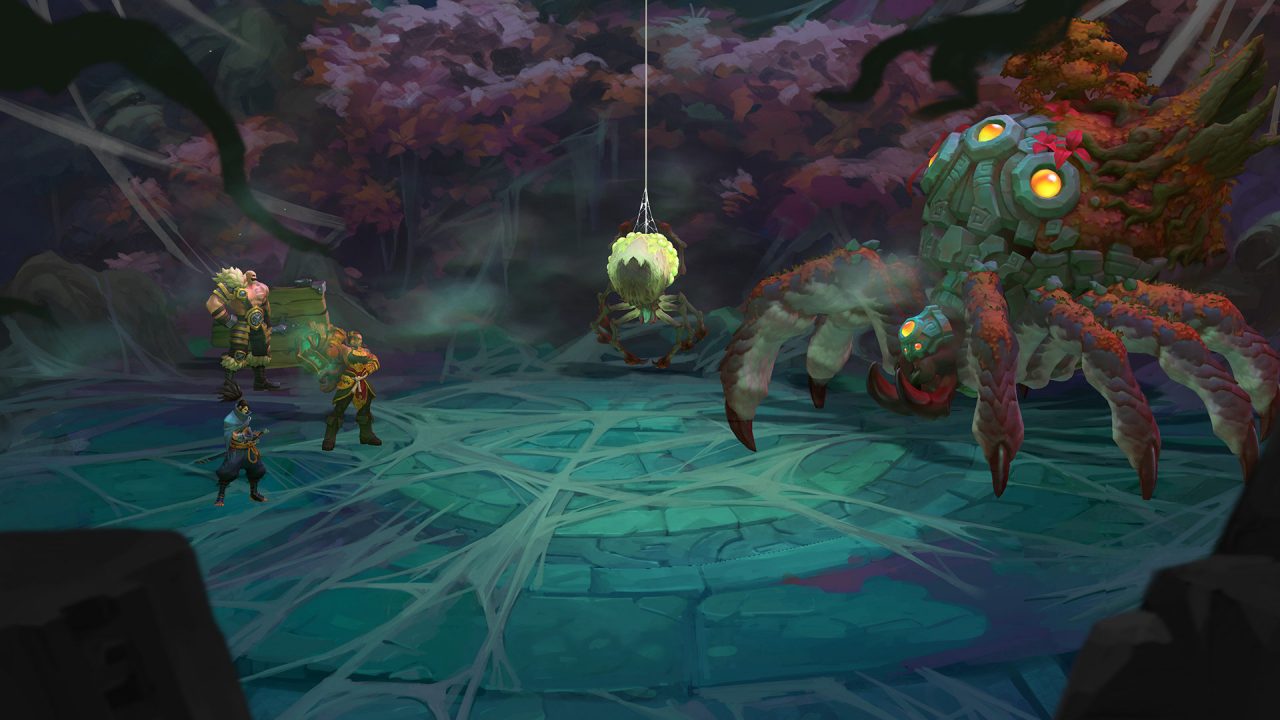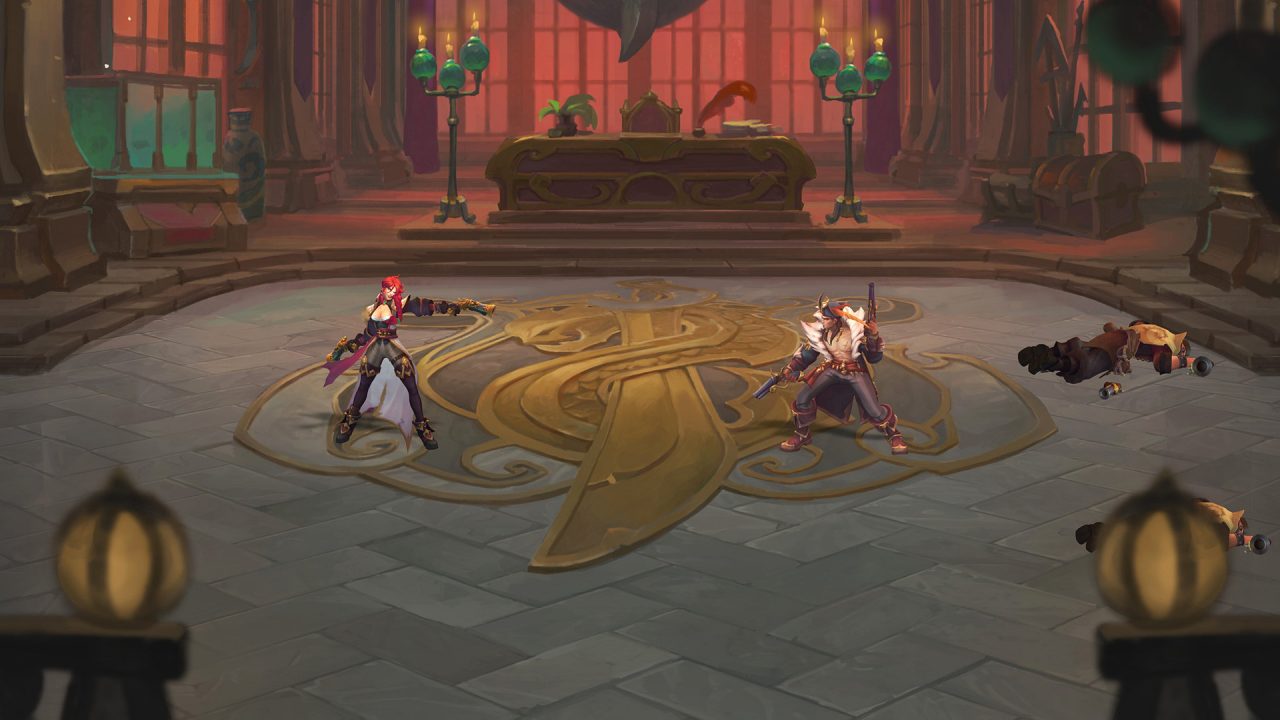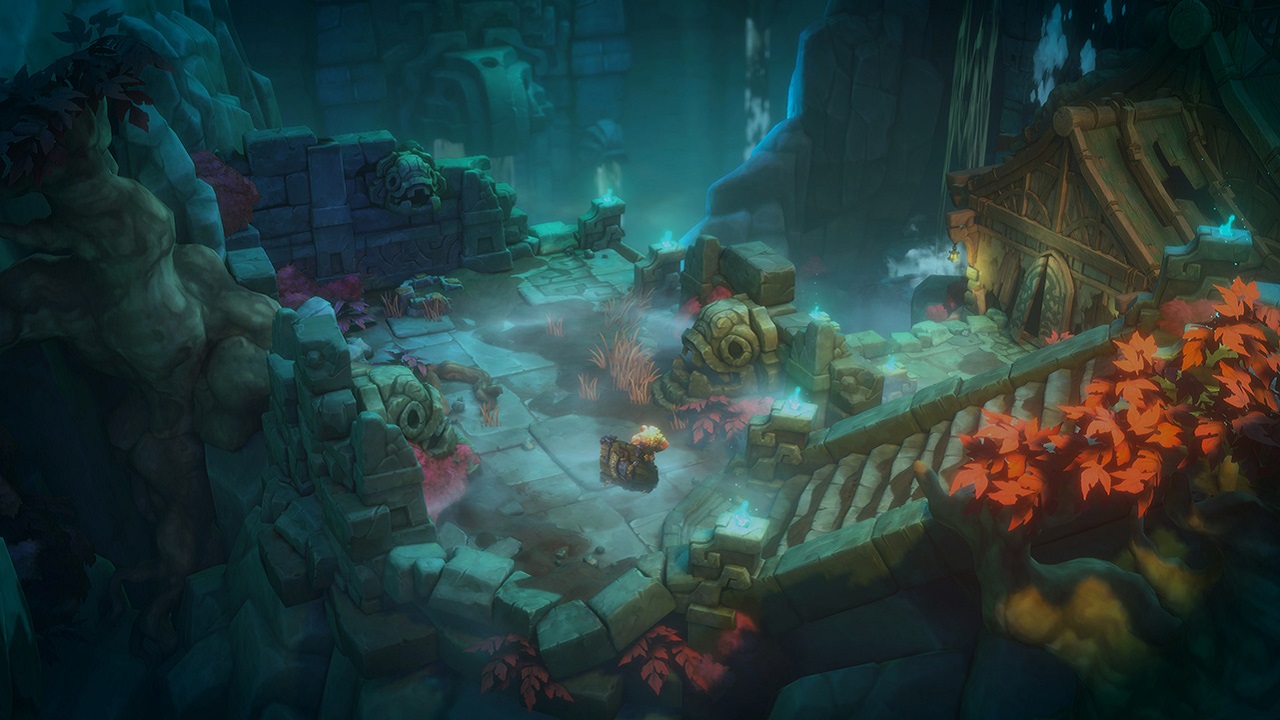For about ten years, Riot Games did almost nothing with their only intellectual property, League of Legends. Then the Big Bang struck and from seemingly out of nowhere, we have a competitive card game, first-person hero shooter, auto-battler, runner, and now turn-based RPG. Ruined King: A League of Legends Story meets the standard of these other spin-off titles capably as we venture into a tale featuring a few of the most popular characters.
Avast, ye sea dogs! We’re off to Bilgewater and the Shadow Isles for a romp with ghosts, pirates, and a shirtless, mustached hero from an arctic land. At the outset, we meet Miss Sarah Fortune, a pirate captain who has just overthrown Gangplank, the former captain of Bilgewater known for his cruelty and iron fist. She sought to avenge her mother, who Gangplank murdered when Miss Fortune was just a child, and did just that. Now, she has to unite the rest of the pirate clans of Bilgewater to maintain a semblance of control. Her mission doesn’t go as swimmingly as she’d hoped, though: disaster strikes as ne’er-do-wells from the Shadow Isles threaten to introduce a new Harrowing that could ravage the world.
The Shadow Isles are the corrupted archipelago of the Blessed Isles some thousand years prior. Harrowings are events in which ghostly beings sort of emerge from this place as foretold by Buhru clans. The Buhru people follow the Serpent Mother, a god who protects and serves the people of the world by working through her followers. In order to maintain her growing hold over Bilgewater, Miss Fortune must ally with various champions proven worthy by this deity to eventually defeat the Ruined King.

At its core, Ruined King is about good guys fighting bad guys to stop a looming evil from terrorizing the world. JRPG fans will find this pretty standard, but the devil’s in the details, of course. The plot and intricacies weave and wind as we learn more about the Ruined King, but most of the story takes place amongst exceptionally disparate allies.
With the gigantic cast of characters that League of Legends boasts, how did Airship Syndicate, the developer trusted with the licensed property, choose who to include? Clearly, Bilgewater is the setting, so including Gangplank and Miss Fortune is an intuitive choice. Other characters seem almost randomly thrown into the mix, but the writers justify their appearance well with sound writing.
Yet, while the dialogue and interactions are enjoyable, they lack depth. Each character serves as an archetype and each interaction feels one-note. This isn’t necessarily a bad thing, but it certainly isn’t a good thing. All great stories have characters with distinct voice and personality, yet also depth and complexity; Ruined King’s characters only have the first half. For this world, with this source material, adding substance is almost a risk, and perhaps Riot put the kibosh on any attempt to do so. Braum, for example, is distinctly known in the League community as a charming, altruistic tough guy who loves cute critters known as poros. That’s pretty much what players are going to get in Ruined King. To add more to Braum could depart from what fans of League see in him. Is that bad? I certainly don’t think so, but Riot might.

For what Ruined King is–a forty-hour adventure with a relatively cliche plot–I can’t say the characters need to be anything more than their surface-level portrayals. In fact, part of the storytelling and relationship building takes place around a campfire while characters rest. These short exchanges are typically endearing but also comment on the stresses some experience. Dialogue like this always feels like a bonus because the context around its delivery is optional and bite-sized, yet authentic.
Ruined King’s core gameplay takes place isometrically in a zoomed-out map across various locations. Bilgewater, the primary town in the game, is divided into districts that transition when a player walks over the arrow at the edge of a walkway, for instance. Several people are potential conversation partners that add flavor to the town, but most of this dialogue isn’t all that interesting. Shops litter Bilgewater with all sorts of equipment, fishing supplies, potions, and crafting materials. Bounty boards and side quest dealers make getting around a little more fun, but none of these depart from the fetch quest or find-and-kill formula we’re all aware of. When not in town, players navigate dungeons much the same way but encounter battles when enemies collide with the hero.
Battles occur in turn-based fashion in parties of three. This is where Ruined King shines. Turn order is determined by how quickly or slowly a character completes a special attack. Special attacks can be speedy, balanced, or powerful; as one might expect, the healing or damage is dependent on the choice. Each character has six abilities that vary greatly from one another and can be enhanced with ability points accrued occasionally at level up. Unlike several titles out there, the upgrades are usually a difficult choice that extends beyond “increase critical hit chance by .5%.”
Each character has a few roles to serve, and has unique passive abilities that make using them feel distinct between party members. One character builds essence that can buff other abilities or be depleted to heal the weakest character upon attacking. Another concusses enemies allowing other characters to further concuss the enemy upon hitting them until max stacks are reached, stunning the enemy. Now, what if you have a character specializing in several hits all at once? Combos become immediately apparent, but having a well-rounded team is essential if players are to survive encounter after encounter.

Unfortunately, Ruined King’s dungeons can sometimes feel excessively long and tedious. I didn’t mind this in most cases because battles are such a satisfying engagement of efficiency, and each combination of enemies requires different tactics from the party. While falling into a pattern is certainly inevitable, unique situations occasionally arise that force players to think differently to dig out of a hole. Players looking for a challenge should choose the highest difficulty. I decided on veteran, which is a notch above normal, and found the experience on the easy side. Still, I couldn’t mash attack through the game, having to think carefully about each decision, but I was in no way under any threat of losing except in three or four instances.
Dungeons sometimes have interactive environments that require use of a specific character, which can be a bit of a headache if players don’t somehow know who to bring, requiring a second trip. Similarly, the puzzles are mindlessly simple and tedious. Fortunately, the combat’s intricacies make getting around these labyrinths a pleasure, further enhanced by the sound design.
While the music isn’t anything special, the sound design in combat makes each assault satisfying with credible pows and slices; the bass truly packs a punch. What’s more, each voice actor capably delivers their lines, further adding to everyone’s personality. The visuals are adequate by today’s standards, but those accustomed to Riot’s flashy cartoons will be left wanting here as Airship Syndicate clearly didn’t have the publisher’s animation team on hand. That said, those preferring a comic book style will enjoy the still images paired up with dialogue.
Flawed but engrossing, I could have definitely played Ruined King: A League of Legends Story for several more hours. The characters, their relationships, and their combat prowess are addictive both in their simplicity and crisp design. Appreciating Ruined King for what it is is important: this isn’t The Witcher, but it knows its identity and leans into it with finesse. Those not into the League of Legends world will enjoy the experience if turn-based RPGs are their thing, but fans of the universe will definitely get something extra out of it.


